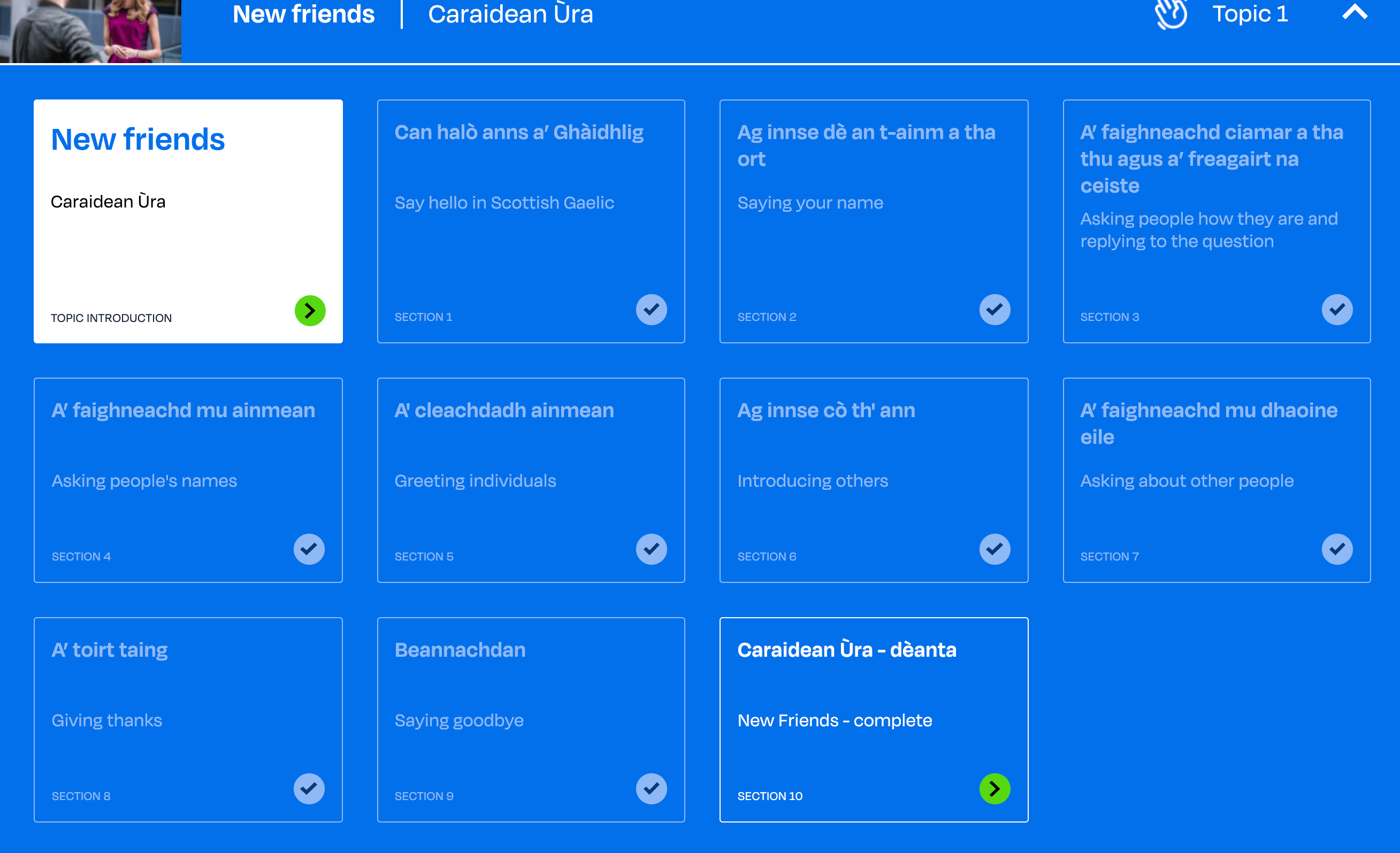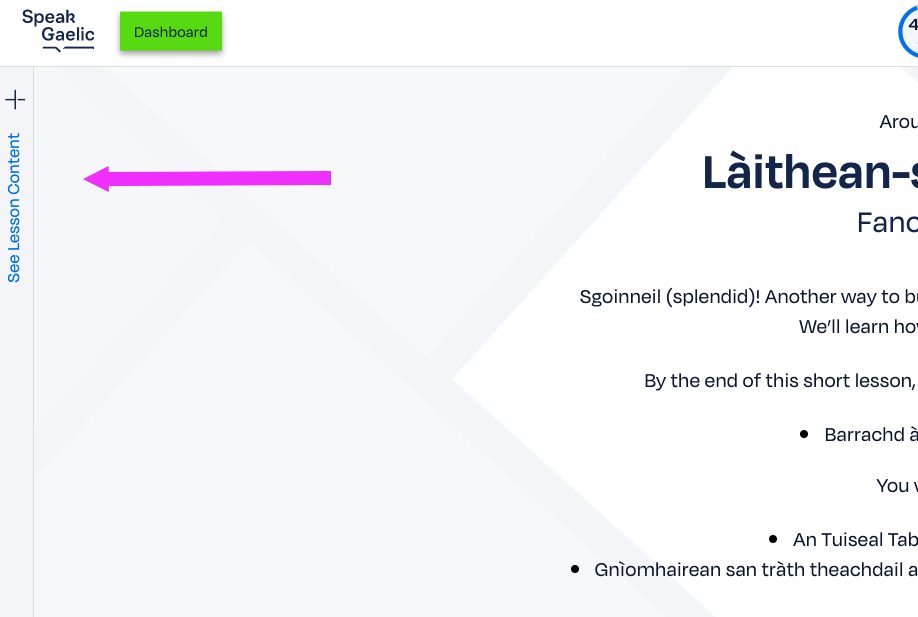Cò tha os a cionn?
Who is in charge (of it)?
In Gaelic, we use the compound preposition os cionn to say ‘above’ and ‘in charge of’. As we saw with other compound prepositions, os cionn causes nouns which follow it to take the genitive case.
We can also combine the possessive adjectives mo, do, a, a(–h–), ar, ur an/am with it to say os mo chionn (above me) etc
Os mo chionn
We can combine the compound preposition os cionn with the possessive adjectives: mo, do, a, a, ar, ur, an/am, in the same way we did with às dèidh, ri taobh, and airson.
And as we saw before, we place the possessive adjective between the two parts of the compound preposition.
| os cionn + mo | os mo chionn |
| os cionn + do | os do chionn |
| os cionn + a | os a chionn |
| os cionn + a | os a cionn |
| os cionn + ar | os ar cionn |
| os cionn + ur | os ur cionn |
| os cionn + an | os an cionn |
Cò tha os do chionn?
Who is above you?
A bheil daoine os ar cionn?
Are there people above us?
‘S e companaidh mhath a th’ innte, cò tha os a cionn?
It’s a good company, who is in charge of it?
‘S e Raonaid a tha os cionn na companaidh.
Rachel is in charge of the company.
A bheil cuideigin os do chionn aig an obair agad?
Is there a someone above you in your work?
Tha na nàbaidhean a’ dèanamh cus fuaim ann am flat os ar cionn.
The neighbours are making too much noise in the flat above us.
Cò tha os cionn na companaidh far a bheil thu ag obair?
Who is in charge of the company where you work?
Tha Seonaidh ag obair ri mo thaobh san oifis agam.
Jonny is working beside me in my office.
Nuair a bhios an latha–obrach agad deiseil, dè nì thu às a dhèidh?
When the working day is over what will you do after (it)?




